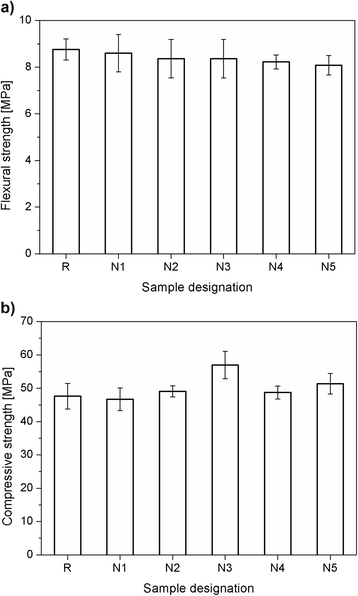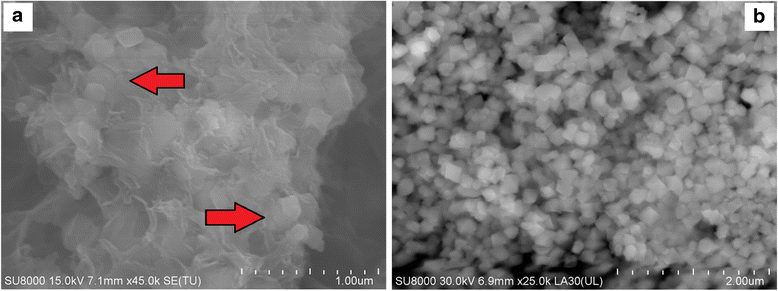The Influence of Nano-Fe3O4 on the Microstructure and Mechanical Properties of Cementitious Composites
- PMID: 27067730
- PMCID: PMC4828360
- DOI: 10.1186/s11671-016-1401-1
The Influence of Nano-Fe3O4 on the Microstructure and Mechanical Properties of Cementitious Composites
Abstract
In the last decade, nanotechnology has been gathering a spectacular amount of attention in the field of building materials. The incorporation of nanosized particles in a small amount to the building materials can influence their properties significantly. And it can contribute to the creation of novel and sustainable structures. In this work, the effect of nano-Fe3O4 as an admixture (from 1 to 5 wt.% in mass of the cement) on the mechanical and microstructural properties of cementitious composites has been characterised. The study showed that Fe3O4 nanoparticles acted as a filler which improved the microstructure of a cementitious composite and reduced its total porosity, thus increasing the density of the composite. The presence of nanomagnetite did not affect the main hydration products and the rate of cement hydration. In addition, the samples containing nanomagnetite exhibited compressive strength improvement (up to 20 %). The study showed that 3 wt.% of nano-Fe3O4 in the cementitious composite was the optimal amount to improve both its mechanical and microstructural properties.
Figures








References
-
- Silvestre J, Silvestre N, de Brito J (2015) Review on concrete nanotechnology. Eur J Environ Civ Eng 20(4):1-31
-
- Sikora P, Horszczaruk E, Rucinska T. The effect of nanosilica and titanium dioxide on the mechanical and self-cleaning properties of waste-glass cement mortar. Proc Eng. 2015;108:146–53. doi: 10.1016/j.proeng.2015.06.130. - DOI
-
- Czarnecki L. Sustainable concrete; is nanotechnology the future of concrete polymer composites? Adv Mater Res. 2013;687:3–11. doi: 10.4028/www.scientific.net/AMR.687.3. - DOI
-
- Horszczaruk E, Mijowska E, Cendrowski K, Sikora P. Influence of the new method of nanosilica addition on the mechanical properties of cement mortars. Cem Lime Concr. 2014;5:308–15.
LinkOut - more resources
Full Text Sources
Other Literature Sources

